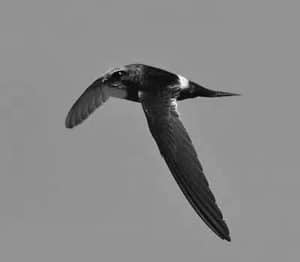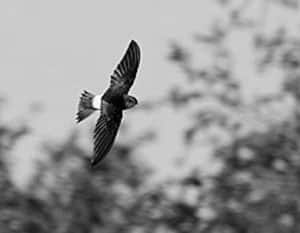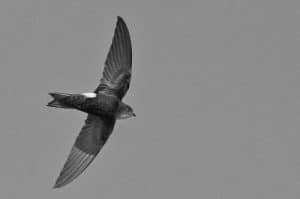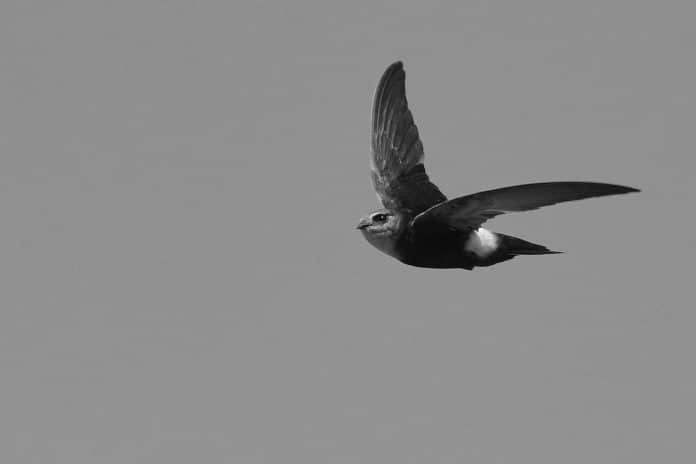Introduction to the Horus Swift in Tanzania
The Horus Swift in Tanzania (Apus horus) is a migratory bird species that can be found in various parts of Africa, including Tanzania. With its elegant, streamlined body and long, scythe-like wings, the Horus Swift is a captivating sight in flight. Named after the ancient Egyptian sky god, Horus, this bird embodies grace, agility, and the freedom of the open sky.
Overview of the Tanzanian birding scene

Tanzania is a haven for birdwatchers, boasting over 1,000 different bird species. Its diverse landscapes, from the vast Serengeti plains to the lush forests of the Eastern Arc Mountains, provide a rich habitat for a wide array of avian life. Whether you’re a seasoned birder or a novice enthusiast, Tanzania offers endless opportunities to observe unique and rare bird species in their natural habitats.
Identifying the Horus Swift
The Horus Swift can be recognized by its distinctive features. It has a sleek, black body with a slightly forked tail. Its wings are long and narrow, allowing it to effortlessly glide through the air. One key characteristic of the Horus Swift is its white throat and chest, which contrasts beautifully with its dark plumage. When in flight, the Horus Swift appears as a swift, darting shadow against the sky.
Habitat and behavior of the Horus Swift
The Horus Swift prefers open habitats such as savannas, grasslands, and woodland edges. During the breeding season, which typically occurs from November to April, these birds can be found in Tanzania and other parts of Africa. They build their nests in crevices on cliffs or in man-made structures such as buildings and bridges.
Horus Swifts are highly social birds and are often seen in large flocks. They communicate with each other through high-pitched calls and engage in aerial displays, where they fly in synchronized patterns. These displays are not only a mesmerizing sight but also serve as a means of courtship and territorial defense.
Best locations in Tanzania for spotting the Horus Swift

Tanzania offers several prime locations for spotting the Horus Swift. One such place is the Ngorongoro Conservation Area, a UNESCO World Heritage Site known for its diverse wildlife. Here, you can witness the Horus Swifts soaring above the expansive plains, providing a breathtaking spectacle against the backdrop of the Ngorongoro Crater.
Another excellent spot for observing these birds is the Ruaha National Park. With its vast savannas and riverine forests, Ruaha is home to an abundance of bird species, including the majestic Horus Swift. Take a guided tour or explore the park on foot to increase your chances of spotting this remarkable bird.
Tips for successful birding in Tanzania
To make the most of your birding experience in Tanzania, it is essential to come prepared. Here are a few tips to ensure a successful trip:
- Opt for early morning or late afternoon birding sessions, as many bird species are more active during these times.
- Invest in a good pair of binoculars and a field guide to help with bird identification.
- Dress in neutral, comfortable clothing to blend in with your surroundings and avoid disturbing the birds.
- Respect the natural habitats of the birds and maintain a safe distance to avoid causing stress or disturbance.
- Consider hiring a local birding guide who can provide valuable insights and help you locate specific bird species.
Other bird species to look out for in Tanzania
While the Horus Swift is undoubtedly a highlight of birding in Tanzania, there are numerous other avian species worth keeping an eye out for. The country is home to an impressive array of colorful and unique birds, such as the Lilac-breasted Roller, Crowned Crane, and the African Fish Eagle. Each region of Tanzania offers its own selection of bird species, making it a birdwatcher’s dream destination.
Conservation efforts for the Horus Swift
As with many bird species, the Horus Swift faces various conservation challenges. Loss of habitat due to human activities, such as deforestation and urbanization, poses a significant threat to their population. Additionally, climate change and the disruption of migratory patterns further impact their survival.
To mitigate these threats, several organizations and national parks in Tanzania are actively involved in conservation efforts. They work towards preserving the natural habitats of the Horus Swift and implementing measures to raise awareness about the importance of protecting these birds. By supporting these initiatives and practicing responsible birding, we can contribute to the preservation of the Horus Swift population.
Birding tours and guides in Tanzania

For those seeking a more immersive birding experience, numerous tour operators and birding guides specialize in organizing birdwatching trips in Tanzania. These experts have extensive knowledge of the local bird species and can take you to the best locations for spotting the Horus Swift and other avian treasures. Whether you prefer a day trip or an extended expedition, these tours offer a unique opportunity to explore the diverse birdlife of Tanzania.
Conclusion and the importance of preserving the Horus Swift population
The Horus Swift is not only a majestic bird but also an indicator of the health of Tanzania’s ecosystems. As we marvel at the beauty of these regal flyers, it is crucial to recognize the importance of preserving their population. By promoting sustainable tourism, supporting conservation efforts, and raising awareness about the threats they face, we can ensure that future generations can also experience the wonder of the Horus Swift in Tanzania.

































